Ishar 3: The Seven Gates of Infinity
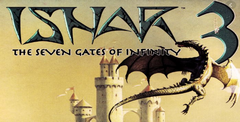
| a game by | Silmarils |
| Platform: | PC (1994) |
| User Rating: | 7.0/10 - 2 votes |
| Rate this game: | |
| See also: | RPGs |
There Was a moment during my time with Silmarils' latest dip into the murky swimming pool of role-playing games when I swear it suddenly realised how bad it was and decided to try and make up for its shortcomings. I was strolling through a standard, run-of-the-mill fantasy townscape when for no reason at all it sent me on a pub crawl! I was supposed to be looking for a wizard's apprentice or somesuch, found a note saying he was waiting at a tavern, but didn't tell me where it was. Hence I had to trudge around town, from one pub to the next (there were over 15 of them... I think The Big Troffer had the best ale to clean table ratio, four stars - highly recommended... sorry, hie, where was I?) (Any bloody excuse! - Ed.).
But, as you've probably guessed, that was about the only high point of this otherwise uninspired, unoriginal, unrewarding attempt to cash in on a former success. You see, despite the fact that I've yet to see a favourable review of an Ishar game, the series has steadily built up a small but dedicated band of followers. Of course, even Spurs have a small but dedicated band of followers so I guess there's no accounting for taste. With that in mind, then. I'll split the review into three parts. A bit for those who've enjoyed the series, a bit for those who couldn't care less about the series (which will be a good bit with a couple of celebrities being mentioned) and a nice sort of summing up bit at the end. Of course, I'll be slagging it off in all three bits so perhaps you should bear that in mind before we begin.
Fans of the series
As you might recall, this whole journey began with Crystals of Arborea in which a goodly Elf (aided by a plucky band of heroes) became the ruler of Kendoria after a vicious magical battle. Never one to let a good thing lie (or in this case a fairly average thing lie), Silmarils released Ishar: Legend of the Fortress, featuring you (and your plucky band of heroes) stopping an evil magician enslaving the world. Then came the socially active Ishar II, with its underlying message of Don't Do Drugs, dealing as it did with a dope-peddling monk contrblling the minds of an entire township. Although Ishar II ended with you (and your plucky band of heroes) killing the monk, this is never usually enough to stop them in fantasy games and so naturally, for the sequel to the sequel (to the sequel, if you count Arborea) he's returned. Which is a slightly dodgy concept of course, in that it implies that 'Hey kids, taking drugs lets you live forever!'.
The monk, going by the name of Shandar, had secured his return to Ishar's shores by magically freeing his spiritual self from his defeated body. Roaming around the ether, Shandar has located the perfect body to inhabit in order to wreak his terrible revenge on the world: an ancient black dragon known as Wohratax (hey, it's a role-playing game. There had to be someone with an X in his name eventually).
This leads us to the first of Ishar Ill's main problems - the storyline. Whatever problems the other titles had (and believe me, there were quite a few of them), the one redeeming feature was that they at least had slightly above average storylines, even if they were told in a slightly below average way. For the triumphant finale to the trilogy, though, we find our plucky band of heroes basically having to find a dungeon, trek through it and kill a dragon. The single most basic plotline in the entire fantasy genre.
Now the designers have tried to beef this up by including a time-travel element, but it's here that we fly headlong into the brick wall that Dame Fortune so expediently placed in the path of Ishar's originality. I have a problem with time-travel in that I live for paradoxes. Yes, it's a sad life, I agree, but I love to look at things that deal with time-travel and try to pull them apart ('Yes but Sam couldn't have leapt back and saved Al's marriage because that means A1 would never have been involved in the Quantum Leap project and then Sam could never have completed all those leaps etc, etc..."). Ishar III requires you to find several time gates and hop back and forward in the Ishar timeline. Trouble is, time-travel only becomes interesting when you can relate to the places you're travelling to. Popping back in Earth's history, for example, is fun (or so I've been told) because you can witness things that you've only ever read about but have had a bearing on your life.
The first place I travelled back to here was a forest 75 years or so in Ishar's past. Thing is, it might just as well have been a forest on the edge of town for all the historic value it showed. Silmarils hasn't gone to enough lengths to detail its world for us to care what it looked like in the past or what it will become in the future and since these all amount to standard fantasy locales anyway the time-travelling aspect of the game becomes nothing more than a device for going from a jungle location to a mountain location to a forest location.
Not fans of the series
You've never played an Ishar game and you want to know if you should start now. The simple answer is 'no', the main reason being that it is a flick-screen affair, a la Eye of the Beholder. Now I'm not necessarily saying that all flick-screen games are bad, but consider. Almost every first-person perspective game we see these days is smooth-scrolling. Ultima Underworld started it and Doom rubbed it in our face with venom (and blood and guts and bullets and chainsaws). If you're wanting to play an absorbing, innovative and entertaining role-player, you might as well go with games using Nineties technology rather than trip lightly down the memory lane of the Eighties.
But that's not the only thing that should hold you back. Almost every part of Tshar Ill's game design is practically screaming 'Go away!'. Let's take a look at character interaction. Imagine, if you will, that you're sitting at the design table in Silmarils' office, discussing various aspects of Ishar Ill's gameplay. The subject gets round to non-player characters.
"Okay," says Rene or Franc, or whoever but with a little bit too much phlegm in his throat, "let us put people all over ze town and forgive my rather stereotyped accenting here, but they are French after all and if ze players go near zem, dey randomly decide whether or not to talk to zem!" "Bravo, encore, magnifique," the rest all chant in between bouts of Jerry Lewis films (Jerry Lewis? Godard surely?... No, perhaps you're right - Ed!).
Well, it sounds like a pretty okay idea but it doesn't work for the following reasons. First of all, the people don't move. At all. Day or night you'll find them all standing in exactly the same spot. And they're always facing you, no matter what direction you look at them. They're like those paintings with eyes that follow you all round the room. They're scary. It's like a trip through the Village of the Damned.
Secondly, they speak utter rubbish and tend to contradict themselves at every turn. The very first person I encountered was a waxwork dummy with a sword who randomly decided to tell me that everyone in town hates strangers (that's another one for all you cliche spotters to mark off. You are writing them all down, aren't you?
There'll be questions at the end!). The very next person I encountered randomly decided to tell me that he was the Town's Cultural Attache or something and that as a tourist I should go and visit all the interesting libraries in the area. And this was coming from a guy dressed in little more than a sack, carrying a large club over his shoulder.
Thirdly, and it was around this Ml point that my credibility meter f I got up and walked out of the wt room muttering something fll about going off to snap somewhere, there are about 15 people in the entire town, but a population of something close to a hundred. "Explain Mr. Presley," you request. Repeating graphics, Mr. Reader. For reasons best known to the budgeting department, Silmarils decided to reuse the same graphics over and over again so that, in the space of a single street, it's quite possible to meet the same person four or five times without ever turning around. It reminded me of that Bugs Bunny cartoon where he races the tortoise only to find out there are hundreds of them.
Now okay, Origin (the benchmark designer of RPGs) also does this in some of the Ultimas, but to a very limited extent (usually just guards and watchmen). The company at least has the decency to populate its towns with a large number of individuals, who act in a believable manner. At the moment, that kid who says 'Exactly how much extra pocket money are we talking about' in that Sky advert acts more convincingly than the population of Silmarils' world.
Some people move, but at this point I have to use a phrase that sends a shiver down my spine. Wandering Monsters (shudder). The term comes from the tabletop role-playing game known as Dungeons & Dragons (admit it, you've heard of it). It refers to monsters or creatures that are randomly encountered by the heroes in order to spice up the action. We get them here, bandits in the city, buzzing flies in the forest and so on, and they are the biggest pain in the derriere since Noel Edmonds thought it would be funny to dress up in a big pink rubber suit and eliminate any pride we once had in our nation's cultural output.
Wandering monsters don't work in computer games, especially this computer game, for the simple fact that they always, without fail, interfere with the natural progression of the story. Here they go one step further, they help to reinforce the game's unbelievability. I was standing in front of a town guard on a horse who had just randomly decided to tell me that he would keep our streets clean of crime and, as if on cue, along pops a bunch of bandits and engages me in a fight, the guard remaining motionless in the background. Of course, it could have been an accurate simulation of the West Midlands Police, but somehow I doubt it.
'I'm one of those silly people who buy computer games simply because the graphics look good. Should I?' Well, you are silly, aren't you? Isharlll has a few moments of graphical splendour, but not many. Mostly these occur in set animations such as time-travelling, but they are sadly let down by the rest of the game. As I said previously, Silmarils has decided to cut corners and reuse the same graphics over and over again, for the people, the buildings and the locations.
Always finish on a song
No, don't worry, I'm not going to sing. That was a rather weak way of saying I'm closing the review and I'm going to mention the sound. It's awful (but after taking the rest of the review into account that's hardly surprising, is it?). It's the kind of scratchy digitised rubbish we were getting about five years ago when the SoundBlaster was still just an Ad Lib upgrade and no one had ever heard of a Roland.
Sum up Ishar III in one word? Avoid. Simple as that/It's a very poor end to a pretty poor series. They may be able to make stunning films about female assassins and conjure up the most mouthwatering of dishes using little more than a lettuce leaf, but I've yet to see a decent French role-playing game. Until I do, I'm afraid it's vive les Etats Unis.
Download Ishar 3: The Seven Gates of Infinity

System requirements:
- PC compatible
- Operating systems: Windows 10/Windows 8/Windows 7/2000/Vista/WinXP
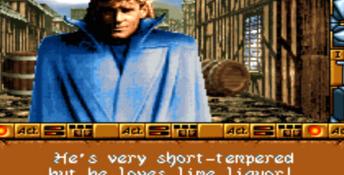

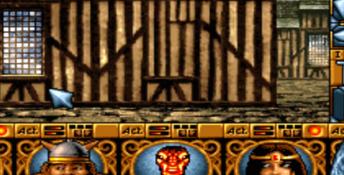
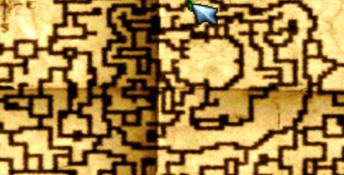
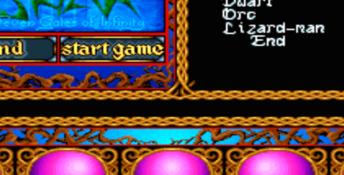

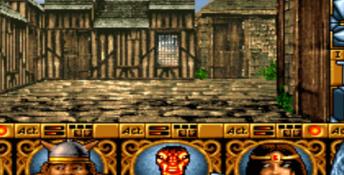
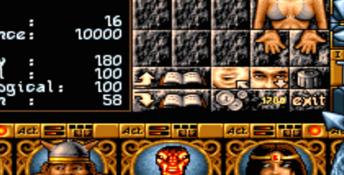
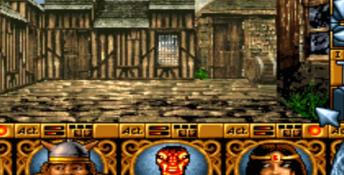



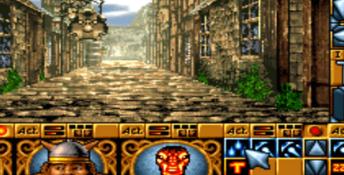

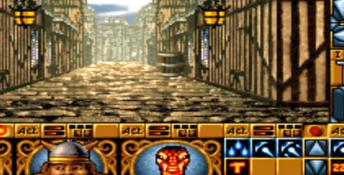
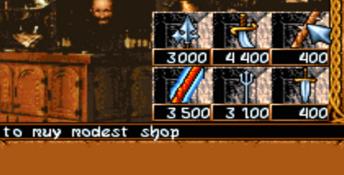

 Skies Of Arcadia
Skies Of Arcadia
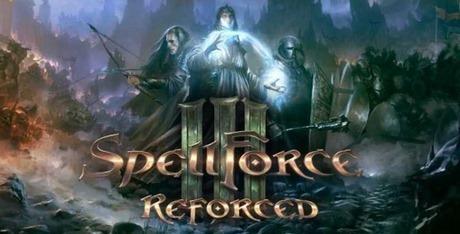 SpellForce III Reforced
SpellForce III Reforced
 Strike Force Heroes
Strike Force Heroes
 3D Dot Game Heroes
3D Dot Game Heroes
 The Legend of Zelda: Skyward Sword HD
The Legend of Zelda: Skyward Sword HD
 Monster Lab
Monster Lab
 The Gray Garden
The Gray Garden
 Outward
Outward
 Sacred
Sacred
 Star Ocean: The Divine Force
Star Ocean: The Divine Force
 Brave Fencer Musashi
Brave Fencer Musashi
 Dragon Ball Z: The Legacy of Goku
Dragon Ball Z: The Legacy of Goku
 Anachronox
Anachronox
 Black Moon Chronicles
Black Moon Chronicles
 Climax Landers
Climax Landers
 Crusaders of Might and Magic
Crusaders of Might and Magic
 Diablo
Diablo Diablo II
Diablo II
 Diablo II: Lord of Destruction
Diablo II: Lord of Destruction
 Dungeon Hack
Dungeon Hack
 Ishar 2: Messengers of Doom
Ishar 2: Messengers of Doom